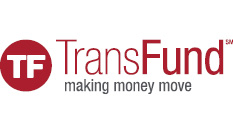As credit unions seek innovative ways to strengthen and differentiate card portfolios, community and affinity cards present a compelling strategy to boost transaction volume, increase competitiveness, and deepen ties with local communities. Community and affinity cards function like typical credit or debit cards but are designed to support local initiatives, channeling benefits to community programs and non-profits with every transaction. With this approach, credit unions not only increase card usage, but also foster brand loyalty and positive community impact.
Community Card Overview
TransFund provides the means to issue custom community and affinity cards tailored to organizations and communities of any size. These cards come in various forms, and are designed to serve different localities, organizations, and non-profits. Community cards allow partnerships with a wide range of organizations and/or communities, while affinity cards are tailored to support specific non-profits or educational institutions. Partnerships with these organizations enable credit unions to differentiate card portfolios, engage members, and attract new accounts. Automatically donate a portion of interchange for each transaction made with the card or contribute a fixed amount.1
TransFund affinity-branded, school, and/or custom community cards, increase competitiveness by appealing to a wider audience, giving passionate members a voice, and enabling support of local communities and organizations. These cards feature the credit union name and logo, along with the name and logo of the partnered high school, church, hospital, fire department, etc. Turnkey marketing solutions are included and enable cardholder acquisition and engagement through targeted promotions.
Benefits of Community Engagement Cards
Key community and affinity card benefits include:
- Increased transaction volume: Boost transaction volume by encouraging top-of-wallet use; members are motivated to use their co-branded affinity or community cards more frequently, knowing that a portion of every purchase supports an organization they care about. TransFund found that within its card portfolio, cardholders with affinity-branded and community cards make an average of five more transactions per month compared to regular debit card users.2
- Increased spend: Beyond driving higher transaction volume, cardholders tend to consolidate their everyday spend on their affinity and community cards to maximize their impact. According to a recent Mastercard study, cardholders spend 2.2x more than the market average on cards linked to causes that they are passionate about.3
- Increased financial support: In addition to driving transaction volume and overall spend, partner organizations – such as communities and non-profits – benefit from a consistent stream of financial support through lump-sum donations, or donations tied to interchange.
While community and affinity card benefits are robust, partnership considerations and overall strategic alignment are crucial to the long-term success and impact of these card programs.
Partnership Considerations
When building community and affinity card programs, consider partnership goals and potential synergies, as well as understand who potential partners serve. This will help ensure strategic alignment and long-term impact – two critical success factors when issuing community and affinity cards:
- Partnership goals: Align overarching goals, timelines, and overall purpose of collaboration to prevent potential long-term misalignment. Both parties should agree on clear and measurable definitions of success, such as program scale, financial performance, or community contributions. Establishing these metrics upfront provides a solid foundation for tracking progress and achieving meaningful, mutually beneficial outcomes.4
- Partner synergies: Confirm the partner organization’s audience is interested in the card product. Pursue partnerships with organizations that represent members, share core values and inspire genuine enthusiasm, ensuring the collaboration feels like a natural fit.
- Partner demographics: When developing community or affinity card programs, consider the demographics of potential partners. Factors such as geographic footprint and the size of the partner’s audience are key considerations. Be sure to discuss member engagement levels with prospective partners to ensure the partnership will drive meaningful participation.4
Conclusion
Community and affinity card programs differentiate card portfolios while making a meaningful impact on local  communities and non-profits. By building relationships with the right partners and thoughtfully designing these programs, credit unions drive higher transaction volumes, increase cardholder spending, and boost competitiveness. At the same time, partner organizations benefit from financial support, helping them further their missions while cardholders support their favorite causes with every purchase. With TransFund’s robust community engagement and affinity card program offerings, credit unions can strengthen their competitive edge and positively impact the communities they serve.
communities and non-profits. By building relationships with the right partners and thoughtfully designing these programs, credit unions drive higher transaction volumes, increase cardholder spending, and boost competitiveness. At the same time, partner organizations benefit from financial support, helping them further their missions while cardholders support their favorite causes with every purchase. With TransFund’s robust community engagement and affinity card program offerings, credit unions can strengthen their competitive edge and positively impact the communities they serve.
Interested in a partnership with TransFund? Click here to connect with us.
Sources:
- Investopedia, Affinity Card: Meaning, Benefits, Example, 2021
- TransFund Expertise
- Mastercard, Passion Cards: External Use Cases, 2023
- Advisors Plus, Affinity Card Program, 2019


